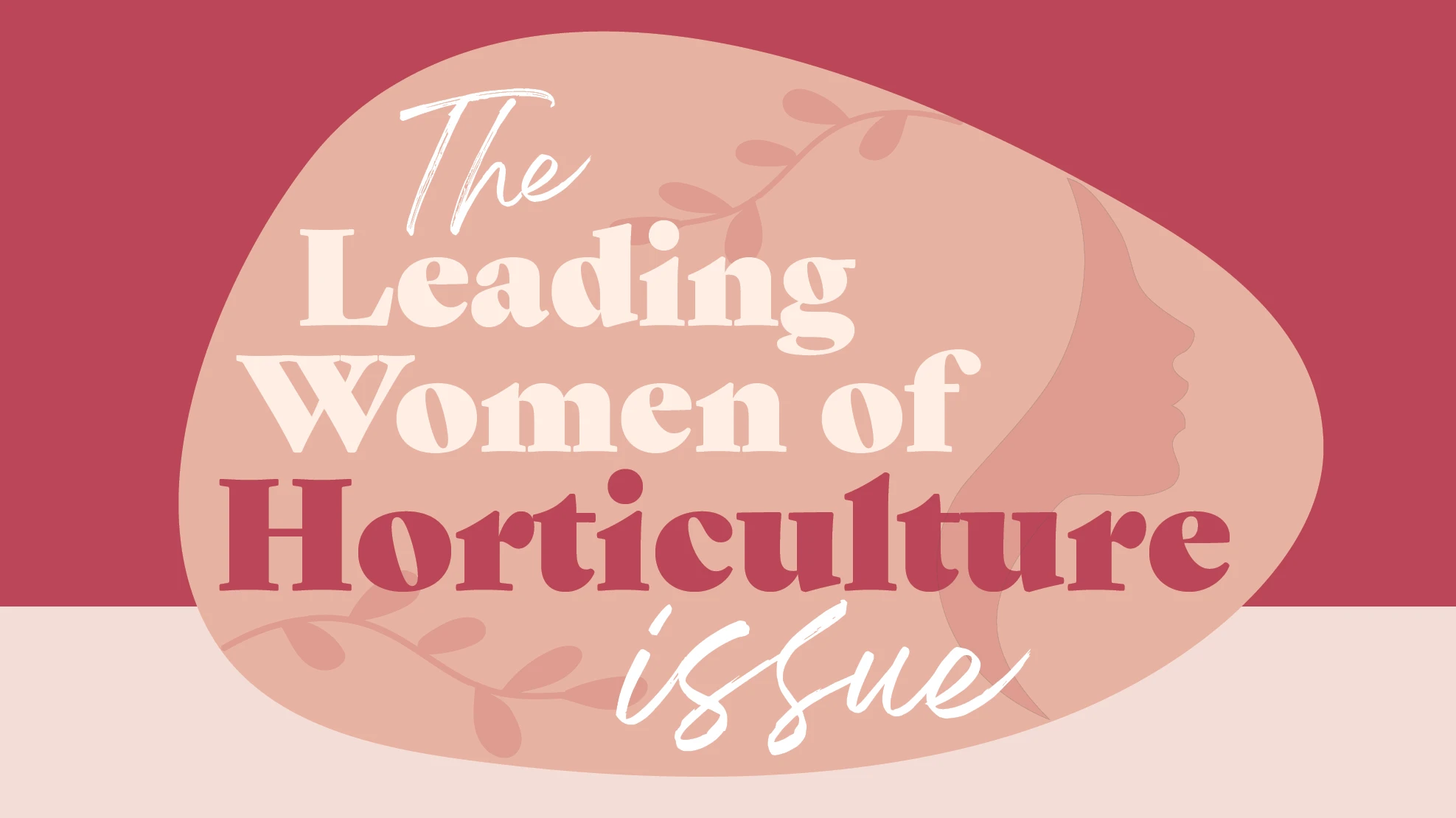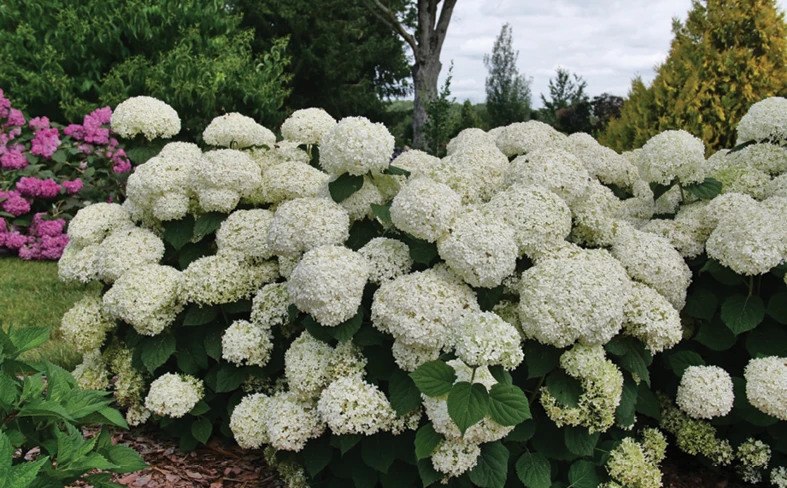 Over the past decade, a number of dramatic changes have impacted the horticulture industry. These changes include the aging of the traditional gardening population, escalating land prices, seemingly more complications and distractions in everyday life and fewer younger people who want to actively work in the soil. These developments have led the
Over the past decade, a number of dramatic changes have impacted the horticulture industry. These changes include the aging of the traditional gardening population, escalating land prices, seemingly more complications and distractions in everyday life and fewer younger people who want to actively work in the soil. These developments have led the
Growers responding to this move have de-emphasized small-volume cell packs and have begun producing more hanging baskets and combination containers.
Combination concerns
One potential problem with mixed containers is that the combination of plant types is often based primarily on visual appeal without taking production concerns into consideration. While two or three different plants may look beautiful in a single container, they may actually have varying and conflicting cultural needs. This situation creates challenges for growers when watering, applying fertilizers and administering plant growth regulators and crop protection products.
Most growers are simultaneously producing a much wider variety of spring crops. They might have different optimal growing medium pH ranges, and a higher or lower general fertilizer demand (heavy feeders vs. salt-sensitive plants). The plants may be sensitive to excess levels of particular micronutrients, or they may have a higher micronutrient demand. While it is theoretically possible to zone greenhouse crops and use different growing media and fertilizer programs to meet the requirements of each crop, it is difficult to achieve when faced with one fertilizer-injection system, limited space and the need to ship finished crops throughout the spring season.
With combination planters, customized nutrient management for specific crops becomes even more challenging when you are growing diverse crops in the same root-zone environment in the same container. Furthermore, crop-protection labels may be vague or restrictive when it comes to some of these new plants and combinations, creating additional uncertainty.
Combine plant types by cultural needs
Plant breeders and propagators provide a great deal of crop production information online. This information includes optimal growing media pH ranges, suggested water-soluble feed concentrations and special nutrient requirements. The Web also offers many suggestions for plant combinations.
One strategy would be to cross-reference the combinations you are interested in producing and then investigating the compatibility from a plant culture perspective. The more similar the cultural needs of the plants, the greater likelihood that they will thrive when grown together. The best way to determine good combinations would be to conduct trials under your specific production conditions.
Create a ‘compromise’ fertilizer program
Soilless growing media include components such as peat moss, composted bark and perlite, and they don’t retain nutrients for long periods. Also, the effect of soil buffering (added as limestone) does not persist for very long.
In today’s growing systems, these media can almost be considered as hydroponic systems. The irrigation water has become the key factor in successful fertilizer selection -- not the growing media. Test your irrigation sources and then adjust for the water’s shortcomings (e.g., low calcium, low magnesium or excessively high alkalinity). In this way, you can prevent many common issues across all crops.
After devising a reasonable fertilizer program that maintains a steady root-zone pH and provides adequate secondary nutrient sources, managing the different nutrient needs between combined crops becomes much easier. Peters ABC System (www.petersabc.com) from Scotts Co. encourages growers to first analyze water and then develop a general fertilizer program that meets the nutrient needs of most crops the majority of the time.
Test, monitor, prescriptively treat
After implementing a general fertilizer program, you will likely need to develop prescriptive treatments for the more demanding crops. Carefully monitoring plant nutrition by testing water, growing medium and tissue samples is the first step toward identifying the need for such a remedial practice.
Any applied treatment should be conservative enough to avoid triggering problems with the other plant types in a given combination. It is better to apply prescriptive treatments like chelated iron on targeted plant combinations at high enough concentrations to prevent deficiency symptoms but not so high to cause toxicity symptoms to a combination’s more sensitive crops.
When crops with disparate cultural needs are combined, you would be wise to test the growing medium and aim to maintain key root zone parameters (e.g., pH and electrical conductivity) at moderate levels between optimum ranges for the combined plant types and avoid extremely high or low levels.
Combining fertilizers
Many mixed container plant species are heavy feeders with vigorous growing habits. Inadequate fertilization will quickly lead to nutrient deficiencies and a decline in the plants’ appearance. A combination fertilizer program of water-soluble and controlled-release fertilizers can be an effective way to manage the nutrition of combination containers.
As previously discussed, water-soluble fertilizer should be matched to the irrigation water sources to provide all the essential nutrients in the correct ratios. The concentration should be targeted for the plant types with the lower nutrient demands, which will invariably lead to a nutrient deficiency for the more heavily feeding plants. Water-soluble fertilizer treatments can also be used to spoon-feed specific nutrients (like iron) or acidify the growing medium as needed.
Controlled-release fertilizers
Controlled-release fertilizers or coated fertilizers can ensure a consistent and predictable supply of nutrients throughout the growing season. Plus, their coating offers a high degree of plant safety. If incorporated into the medium at a very low base level, a controlled-release fertilizer will provide a continuous supply of nutrients that do not significantly elevate the electrical conductivity level of the root zone.
Controlled-release fertilizers can also provide a base feed for all plants when a water-soluble fertilizer can’t be applied during cool, cloudy weather (no need to irrigate) or during busy times when there is no time to irrigate or to mix up fertilizer solutions. Extra controlled-release fertilizer in combination containers can compensate for any nutrient deficiencies experienced by heavy feeders during production.
Suggested controlled-release fertilizer product/ rate selections for use in combination containers should:
* Provide complete nutrient content, including micronutrients.
* Be homogenous in nature for a consistent application pot-to-pot.
* Provide nutrients over the intended production and post-production periods.
* Be applied at an appropriate time for crops and the intended application, considering other fertilizer sources used.
Combination fertilizer programs
Scotts Co. recommends a water-soluble fertilizer program for mixed containers based on a complete water test. The controlled-release fertilizer component should provide a steady and extended release of nitrogen, phosphorus, potassium, magnesium and minor elements. Match the controlled-release fertilizer longevity with the production temperatures and desired delivery time. In most cases, a controlled-release fertilizer with eight to nine months’ longevity performs well into the post-production phase. Refer to the fertilizer label for specifics.
Here are a few tips for a combination fertilizer program:
* Use the low controlled-release fertilizer rate for salt-sensitive, tender species such as fuchsia, begonia, ferns and impatiens.
* For bedding plants, use high-water-retentive media for minimal leaching.
* Use the medium controlled-release fertilizer rate for more vigorous species and heavy feeders such as trailing petunia.
* Use low-water-retentive growing media that contains coarse bark for frequent leaching.
* Water-soluble fertilizer concentrations need to be lowered when used in combination with a controlled-release fertilizer. Reduce the constant feed to 50-75 parts per million nitrogen for bedding plants and 100-150 ppm nitrogen for flowering pot crops and baskets.
- Fred Hulme
{sidebar id=1}
Fred Hulme is director of technical marketing development, Scotts Co., (413) 549-8411; fred.hulme@scotts.com; www.scottsprohort.com.
June 2008







